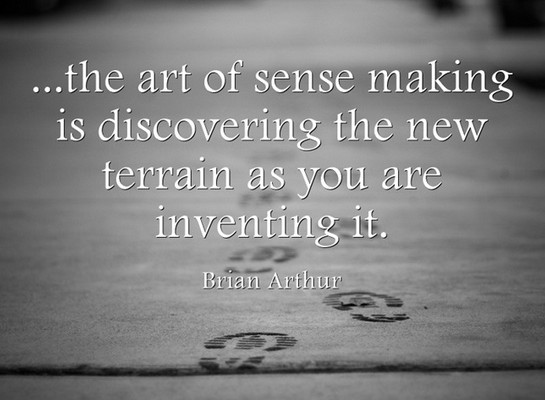 (Click here for Part 1)
(Click here for Part 1)
For collaboration to work, one has to be willing to enter uncomfortable territory of not having the answer. People can feel it when they are asked to collaborate but the plans and answers are already determined. It feels quite different when instead of pushing an idea or agenda on the group, there is a mutual discovery and potential for something new to emerge. Real collaboration enables us to develop ideas and solutions that could only emerge from this combination of people thinking and working together.
Showing up without an answer means you have to ‘unlearn’ things you have been trained to do and have worked well for you. Consider the following roles that leaders play and the skills needed:
- To lead an organization, you need to have a strategy, goals and plans.
- To be an environmental or social advocate, you build a case and persuade people and those in power to adopt your position.
- To be a good sales person or fundraiser means pitching an idea or proposal and getting others to buy or fund it.
- To manage a project, you want to have clear goals, time lines, roles, etc. and be able to report on those to a boss or funder.
Most leaders have learned the skills to have the answers, make a case, and pitch it to gain support, funding, resources, etc. These skills are valuable; however, when in the early stages of developing a collaboration, leaders need to focus on finding the right questions and on listening and making sense of what they are learning together. The tendency to promote the answer that comes from “me” before taking the time to discover the answer that comes from “we” can undermine the full potential of a collaboration from being realized.
Another way traditional leadership skills come up short is when we are working to develop innovative solutions to complex problems. The challenges we face are enormous and interrelated, and in many cases have not been encountered before. For these kinds of “wicked problems,” there is not a simple obvious answer; there is no playbook or recipe for how to solve them. Climate change is an example of a wicked problem, e.g., it has multiple causes and disparate ideas on how to address it, it involves finding ways to motivate people to adopt different behaviors, and humanity has not faced this pace and scale of change before.
In situations like these, we need to explore into the unknown. We need to make sense of the landscape and needs, drawing on as many perspectives as we can, and then create and try various actions, learning and reflecting as we go.
Great leaders are identified by their ability to perceive the nature of the game and the rules by which it is played as they are playing it. In other words, the art of sense making is discovering the new terrain as you are inventing it. – Brian Arthur
This brings us back to the need for leaders to unlearn skills that have worked well and learn and practice new skills. The need for this new skill set and orientation is being recognized in many places and is being called by many names: collaborative leadership, participatory leadership, adaptive leadership, network leadership, leading for regeneration, leading through complexity. A core element in all of these is learning to access the wisdom of larger groups in uncertain territory. In part 3 of this series, we explore tips for how to navigate this territory.

2 thoughts on “Navigating Uncertainty to Gain the Real Value of Collaboration, Part 2”